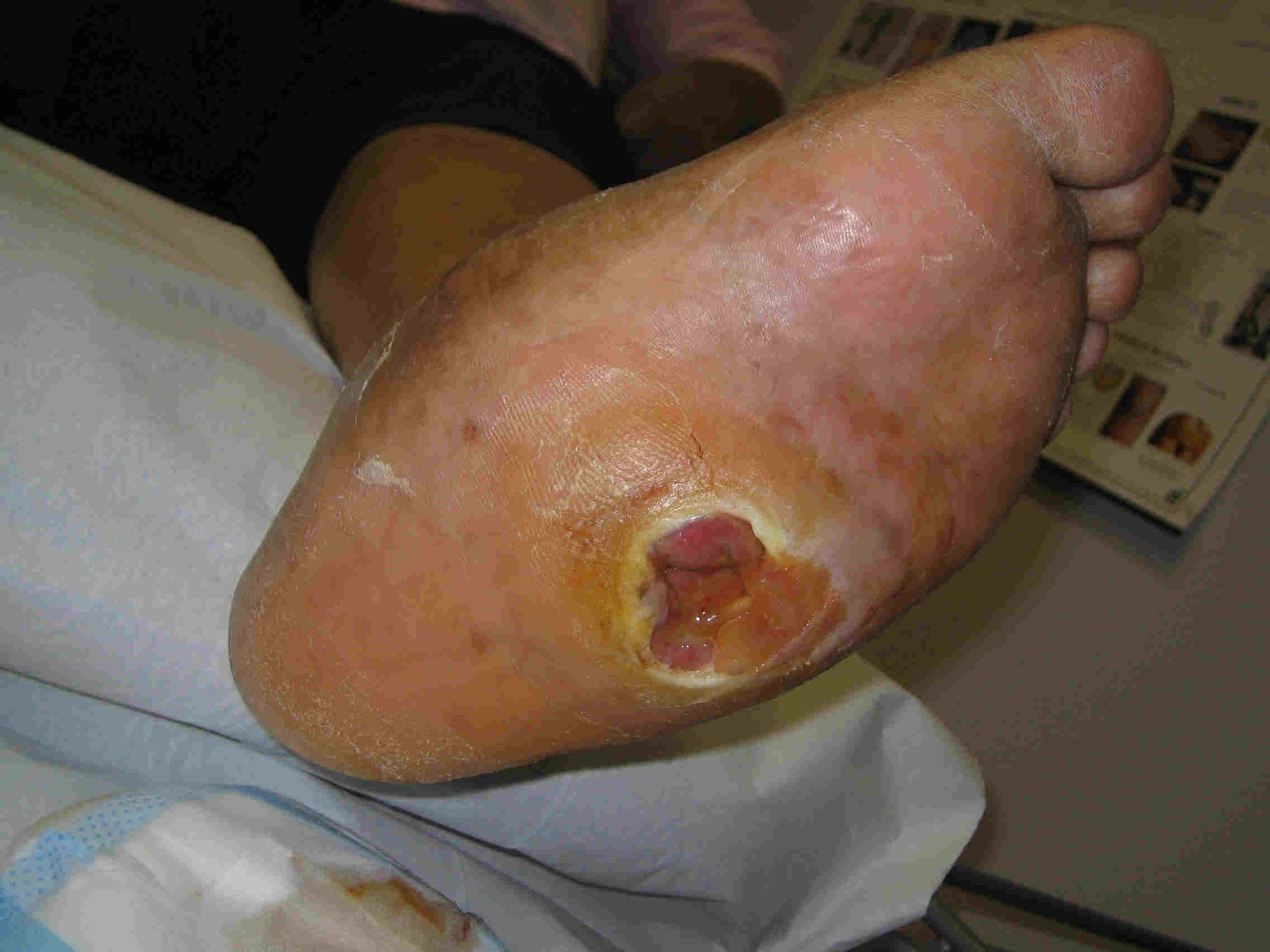
1) With an unknown definitive mechanism of incidence, this disease process has many proposed hypothetical mechanisms currently in clinical practice. Some believe that increased inflammation and microfracturing of the bone secondary to sensory loss are key components, others believe glucose levels and specific traumatic events are responsible for this process which are compounded by inability to offload and protect the injured limb leading to progressive breakdown of the bone. We all agree that these elements are part of the problem, but do not necessarily occur in all cases. Especially in non diabetics with the disease of Charcot neuroarthropathy.
2) We know that many cases start with increased warmth, redness, and swelling. Unfortunately not ALL cases give us this "textbook" presentation.

3) We also know that characteristic radiographic changes may occur. And when they do, differing mindsets and clinical approachs are valid and are practiced routinely in my practice. If an ulceration is present, or progressive radiographic changes are found, surgery is likely required for limb salvage.
4) We generally understand that patients with low or no protective sensory threshold on their feet tend to have a higher incidence of this process. Also patients that have poor glucose control and are obese tend to have this same increase in incidence. Edema and general leg swelling in diabetic patients with Hemoglobin A1c levels higher than 8.0 tend to have increased risk of Charcot development in their feet. Usually all of these patients have good blood flow with regards to arterial circulation, but may have venous or lymphatic flow compromise.

5) Not all patients with Charcot neuroarthropathy are diabetic. I have treated many patients whom are not diagnosed with diabetes, and did not present with red swollen foot, who developed Charcot neuroarthopathy with radiographic bone degradation and resultant foot deformity. These patients do tend to have profound sensory polyneuropathy of unknown etiology (idiopathic) and are still at risk given the above listed requirements. I have had to reconstruct several patient's feet without diabetes as an underlying diagnosis, and it seems that they tend to have less overall complications but are still prone to the neuroarthropathy nonetheless.

The take away from this blog is that many of the "facts" about this disease process have some "grey area" information. You should seek the expert opinion with good experience in this disease process prior to any surgical intervention or decision for lower leg or foot amputation. The doctors at FFLC are well equipped to accommodate and treat this condition and are well versed in all avenues regarding limb salvage.





